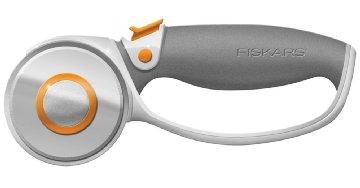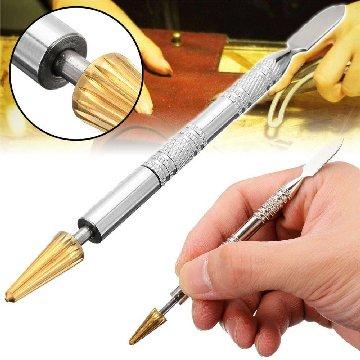-
Posts
5,932 -
Joined
Content Type
Profiles
Forums
Events
Blogs
Gallery
Everything posted by fredk
-
What about the heavy weight plastic sheeting builders use as a damp course barrier betwixt foundations and walls/floors? Its fairly inexpensive and very robust. I used to use it in and around my chicken & hen coops and other animal places. I used it to line a big duck pond nearly 30 years ago and even though I've moved on that pond and its liner is still in use.
-
If I may make some remarks. Firstly, my experience of plating is via automobiles 1. There are chrome platers and chrome platers. That is, some platers are used to heavy duty plating and just plate over what you give them. Others measure the thickness of the original and then remove the old before re-plating 2. If your part was originally plated then it can be re-plated, to the same thickness by a good quality plater 3. for a part that was never plated cadmium coating is an alternative as it only puts a layer microns thick on the part, not enough to interfere with its fitting.
-
Do you mean bevelling the edge? To get into the corner I use a no.11 scalpel blade very carefully, or even a razor blade held in my fingers, just whichever is laying handy on the work bench
-

The most expensive wallet on my life (with greetings from Spain)
fredk replied to JanLeather's topic in Member Gallery
Welcome to the interesting world of leather Nice selection of items. Not badly done either. -

This Art Form Is Going Straight To Hell
fredk replied to Reegesc's topic in Leatherwork Conversation
Nor in the UK. or Europe. Closed all the branches, just as they were getting well known and established. -
tips on use of Mop and Glo 1. put on a first coat thinly. you may find it will lift some dyes or finishes, just as Resolene does 2. when that 1st coat is dry, anywhere between 10 and 30 minutes, apply a 2nd slightly heavier coat 3. that 2nd coat should be enough, but you can put on a 3rd and 4th coat, each of these will increase the shineyness of the finish 4. do not go more than the 4th or a 5th coat as this being a varnish its now building up and will make a hard finish, not good on wallets or purses but suits game boards et cetera
-
Thanks. They keep changing the durned name. Its hard to keep up with it. Alternatives by other makers are available and except for the perfume added they are all exactly the same. In the UK I use 'Astonish' floor polish.
-
Skip the Resolene. Use 'Mop and Go' (correct name?) aka 'Pledge with Future shine' floor polish which is actually a water thin acrylic varnish. Its sealing properties are superior to Resolene
-
I'd agree with deer hide. One of the first gaming sets I made was on very thin deer hide. I cut a circle of it, marked out the playing squares which I carefully dyed. I threaded a length of round thong thru holes around the edge, about 1cm inwards from the edge. When play was finished the game pieces could be left on the centre of the playing area, the thong pulled up, using a wood bead I'd fitted and the whole lot drawn up into a draw-string bag type.
-
That is a thing of real beauty there I guess the symbol is a ranch brand? How is it read?
-
Most excellent What weight, or thickness, of leather did you use? And did you use a wire around the edge of the brim to make it hold its shape?
-
A comfortable knife, easy on the turn and no wobble, but its the blades that matter really edit; here is the review YinTX refers to;
-

This Art Form Is Going Straight To Hell
fredk replied to Reegesc's topic in Leatherwork Conversation
In my area some women have turned 'scrapbooking' into a paying hobby. Folk bring them their cuttings, old cards, old letters etc and they put it all together into what we used to call in child fostering a 'memories book' -
I have two. One from Le Prevo, cost about £10 its ok. Another I got from China via ebay, it cost me under £5, and I think its better than the other. No play in it and it seems to turn smoother.
-
My 60mm is a Fiskars, like this one; Push the orange thing on the top and it pushes the blade out to the cutting position, it also makes the orange button on the side pop out. Press that button and the blade snaps back in to the safe position I'm not sure what make my 28mm is now, its got no name on it. I thought it was an Olfa. I've had it for several years now. Its got a head on I can set at any angle, in line with the handle. I store it so its in-line and set the head/blade at about 30 to 45 degrees for cutting I cannot compare the two as I've only ever owned these ones
-
Must be a difference in knife model. On mine, 60mm & 28mm, the blade guard remains fixed and the blade is moved out to the cutting position. I no longer have the 45mm, I passed it on. Looking at the 28mm again, I reckon I can cut away some of the blade guard to make it more useful.
-
Proops sells through ebay as well. Though I'd hardly describe what they sell are 'man-toys' ~ they sell tools, tools for making things https://www.ebay.co.uk/sch/Business-Office-Industrial/12576/m.html?ssPageName=STRK%3AMEFSXS%3AMESOI&_ssn=spoorp&_sop=15 I second the use of a rotary blade knife. Invest in a 60mm diameter blade one by Fiskars or Olfa. Not only are their blades superior but the knives themselves are more ergonomic. Plus, I've found, the best of these knives slide the blade down to the working position, from its safe position. The 28mm and 45mm knife blades don't clear the handle by more than about 1mm, not enough to cut through 1mm leather. The 60mm comes down further.
-

Does anyone know the correct name for this?
fredk replied to ThoughtFission's topic in Leatherwork Conversation
That looks like a bespoke piece but I reckon a ball-head from a camera tripod could do the job. Use a heavy weight duty one from the likes of Manfrotto -
ooops, sorry, I was talking about placing ready-rivets, not brass rivets which need a setter.
-
1. You must be using really thin leather. I can cut as thin as 1mm with my strap cutter 2. plan ahead. cut a wide piece of leather, enough for several straps. turn this over and glue to the main hide. then use a strap cutter to cut the double thickness in strap widths as needed. using a fresh sharp blade you'll get a nice clean cut edge which won't need any sanding
-
a wee tip idea for placing those rivets into hard to reach places, 1. cut a length of thin card, thinner than cereal box card, but that would do 2. a few mm from the end poke a small hole, small enough to hold a rivet step fast. don't punch the hole, you need the card that forms a rough ring around a poked hole 3. use that assembly to take the rivet to its hole in the leather and push it thru that hole 4. when its in place snap on the head. most rivet heads snap on tight 5. either then or slightly later, give that card strip a good hard tug to rip that few mm at the end, allowing it to come free of the rivet. if you use thicker card, partly cut thru the card from the hole to the end of the strip to help it rip away 6. smash down the head of the rivet, using your favourite hard long anvil as backing I have a couple of lengths of 3mm steel bar and an odd shaped bit of 6mm steel plate as insert anvils.
-

Beginning Sewer looking for general advice
fredk replied to MtlBiker's topic in Leather Sewing Machines
We have a specific section on Leather sewing machines and sewing leather. Either re-post your queries there or get a Moderator to move it there https://leatherworker.net/forum/forum/50-leather-sewing-machines/ -
If that doesn't turn out I bought a set of these, I use them with my press. 7 sizes from 20mm to 50mm, going in 5mm steps, includes a 40mm https://www.ebay.co.uk/itm/7Pcs-DIY-Leather-Punchers-Craft-Cutter-Mold-Die-Round-Hole-Punching-Tools-Kit/353080017082
-

I'm confused about the purpose of some of these products
fredk replied to Chris623's topic in Getting Started
I've no experience of Edge Kote. Edge paint is as thick as non-drip paint. You put it on with a spatula or one of these roller type jobbies I've never had a problem of it peeling. Perhaps its the way I put it on? I do only really use it on pre-dyed chrome tan. I get a colour to match. eg I have a load of lavender coloured leather so I got some edge paint to match as neither the raw edge no black looks good on it




